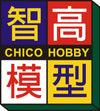THE ROOTS
It is nearly impossible to write down the complete development of the brand MOLOTOW™, as its basic component was laid down in 1959 with “Farben Feuerstein“. Founded by Wilhelm Feuerstein, later his son Jürgen Feuerstein took over the family business and developed it according to his company philosophy.
IT’S BIGGER THAN HIP-HOP
Jürgen already gained the knowledge about paints, their ingredients, durability, quality and opacity in his youth, when he could often be found behind the turntables of local clubs. This and his passion for muscle cars, brought him into contact with the graffiti scene. Unnecessary to mention, that soon the first 1210 cans rotated in his parents' paint store.
Close friendships developed – the scene established and the industrial branch was still at its very beginning. Together with the most prominent graffiti artists, Jürgen developed the first prototypes of graffiti optimized spray cans – this meant: less spray mist, sharp edges and cans without mixing balls. With a spark of ideas, Jürgen leveled the ground for the whole movement.
BOOM BIDDY BYE BYE
With the worldwide first aerosol without mixing balls, the brand MOLOTOW™ was born and its logo for the first time on the backside of the label. Till today this spray can is reference product no. 1 for real action.
Further innovations were not long in coming and the first artist spray can for precise, urban art was born – the MOLOTOW™ PREMIUM. Together with the then following ONE4ALL acrylic markers, this spray can was the flagship and the guideline for future color concepts on the art market.
THE MESSAGE
In the process, the way to today’s graffiti culture wasn’t always easy. In the beginning the society considered graffiti to be ‘smearing’ or even vandalism, until the street movement developed to an accepted form of art. MOLOTOW™ also contributed to the acknowledgement of graffiti, although unknowingly, when opening the first mere graffiti exhibition in the year 2004 in the gallery “K31”. With over 1000 visitors the opening was not only a great success, but also built a new stage for international graffiti artists and their till then underestimated art. This exhibition united art collectors and artists under one message – art doesn’t know stereotypes.

![Liquid Chrome - Mirror Effect 液態電鍍銀 [酒精性顏料]](http://chicohobby.com/cdn/shop/files/LiquidChrome-MirrorEffect_{width}x.jpg?v=1701150346)
![Liquid Chrome - Mirror Effect 液態電鍍銀 [酒精性顏料]](http://chicohobby.com/cdn/shop/files/1mm_{width}x.jpg?v=1701150870)

